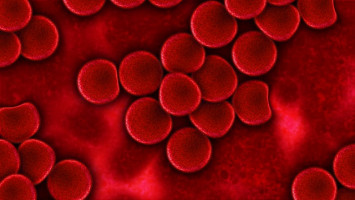
A new clinical tool developed by a team of researchers led by the Dana-Farber Cancer Institute pinpoints which Clonal haematopoiesis patients are at highest risk for cancer progression.
Their work was published in the New England Journal of Medicine Evidence.
“We’ve been able to detect clonal haematopoiesis in patients for years now,” said Dana-Farber haematologist-oncologist and lead author Lachelle D. Weeks, MD, PhD. “But this diagnosis often exposes patients to stress and anxiety because it’s unclear who is at highest risk of developing blood cancer. Our tool can help change that.”
Weeks and her colleagues, led by senior author Benjamin Ebert, MD, PhD, chair of medical oncology at Dana-Farber, analysed data from nearly 200,000 healthy participants in the UK Biobank.
They examined exome sequencing data to determine specific genetic mutations associated with CH and combined genetic data with other demographic and laboratory parameters.
From this information, they identified several measures that were highly predictive of blood cancer risk in CH patients.
These measures include a patient’s age; the type and number of genetic mutations present in blood cells; the fraction of cells in the blood with the CH mutation; low blood counts; and factors related to red blood cell volume.
Their work was presented during the 64th American Society of Hematology (ASH) Annual Meeting and Exposition in December of last year.
The researchers combined these measures together into a computational algorithm, creating a tool that calculates a clonal haematopoiesis risk score (CHRS), which predicts an individual’s future risk of developing blood cancer.
A link to the CHRS calculator can be found here. CHRS values define three distinct groups of patients according to the likelihood of cancer progression — low risk (a score less than or equal to 9.5); intermediate risk (a score ranging from 10 to 12); and high risk (a score of 12.5 or greater).
While the 10-year risk of blood cancer is less than 1% in the low-risk group, the risk of developing a blood cancer such as myelodysplastic syndrome (MDS) or acute myeloid leukaemia (AML) is over 50% for the high-risk group.
The team validated their tool using three additional cohorts: a second cohort of roughly 250,000 healthy UK Biobank participants as well as two CH patient cohorts evaluated for haematological conditions at the Dana-Farber and the University of Pavia in Italy.
“This tool allows us to detect the minority of patients with clonal haematopoiesis who are at high-risk for developing blood cancer,” said Weeks. “That’s really exciting for two reasons — now we can not only estimate patients’ risk and help reduce some of their anxiety and uncertainty, but also take another critical step forward in building out this new field of early detection for blood cancers.”
Clonal haematopoiesis (CH) is a recently characterised condition in which the genetic mutations associated with leukaemia and other blood cancers are found in the blood of individuals without cancer.
This pre-cancerous state is fairly common — for example, it’s present in roughly 15% of people over age 65 — but only a small percentage, around 4%, will go on to develop blood cancer. Because there is no robust, rigorous way to assess risk, clinicians have struggled to advise CH patients on what the future could hold.
The ability to now stratify CH patients according to their risk of cancer progression will also help propel clinical trials for potential therapeutic interventions that prevent cancer in high-risk CH patients.
With the new tool for scoring CH risk that Weeks and her colleagues developed, it will be possible to target experimental treatments to those patients who are most likely to benefit from them during a clinical study.
Source: Dana-Farber Cancer Institute